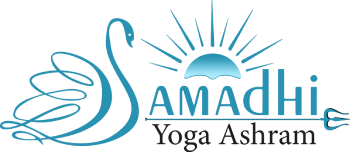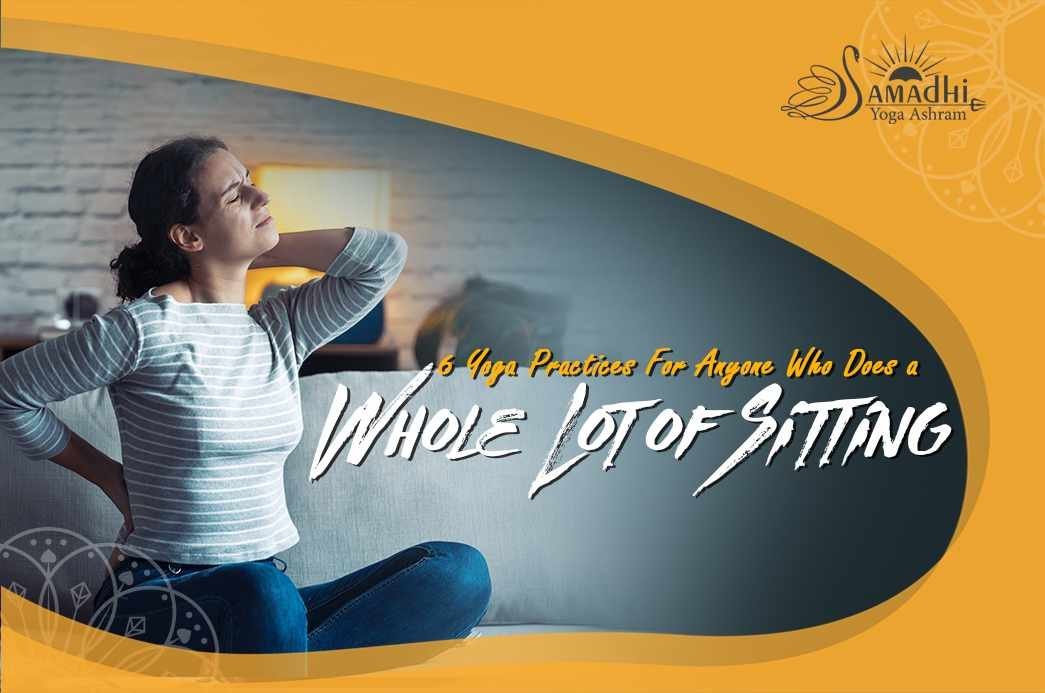In today’s world, many of us spend a significant amount of time sitting – whether it’s at a desk, in a car, or on the couch. While sitting is an essential part of modern life, prolonged sitting can have several negative effects on our bodies. Studies have shown that sitting for extended periods can lead to poor posture, muscle imbalances, and decreased flexibility. Additionally, prolonged sitting has been linked to several health problems, such as obesity, diabetes, and cardiovascular disease. Fortunately, yoga can help counteract the negative effects of prolonged sitting.
In this article, we will explore six yoga poses that are particularly beneficial for anyone who spends a lot of time sitting.
1. Seated Spinal Twist
How to do the pose:
- Begin by sitting cross-legged on the floor with your spine tall and your shoulders relaxed.
- Inhale deeply and on the exhale, twist your torso to the right, placing your left hand on your right knee and your right hand on the floor behind your back.
- Gently turn your head to look over your right shoulder.
- Hold the pose for 5-10 breaths, focusing on lengthening your spine with each inhale and deepening the twist with each exhale.
- Inhale to come back to the center, then repeat the twist on the left side.
Benefits of the pose:
- Improves spinal mobility: Twisting the spine helps to improve flexibility and mobility, which can help counteract the negative effects of prolonged sitting on the spine.
- Releases tension in the back and shoulders: This pose targets the muscles in the back and shoulders, helping to release any tension or tightness that may have built up from sitting for extended periods.
- Aids digestion: The twisting motion of this pose can help stimulate the digestive system, aiding in digestion and relieving bloating and discomfort.
2. Cat-Cow Stretch
How to do the pose:
- Begin on your hands and knees, with your wrists directly under your shoulders and your knees directly under your hips.
- Inhale deeply and on the exhale, arch your back and tuck your chin to your chest, as you round your spine up towards the ceiling, coming into the “Cat” pose.
- Inhale and lift your head and tailbone towards the ceiling, as you let your belly drop towards the floor, coming into the “Cow” pose.
- Repeat this flow, moving back and forth between Cat and Cow, for several rounds, syncing your breath with your movements.
Benefits of the pose:
- Relieves tension in the back: The gentle stretching and movement of the back muscles in this pose can help relieve any tension or tightness that may have built up from sitting for extended periods.
- Promotes healthy breathing: The synchronization of the breath with the movement in this pose can help promote healthy breathing patterns, which can reduce stress and anxiety.
- Massages internal organs: The movement of the spine in this pose can help massage the internal organs, aiding in digestion and promoting overall organ health.
3. Forward Fold
How to do the pose:
- Begin standing with your feet hip-width apart and your arms at your sides.
- Inhale deeply and on the exhale, slowly hinge forward at the hips, keeping your spine long and your legs straight.
- Allow your hands to rest on the floor, or on a block or chair if you cannot comfortably reach the floor.
- Let your head and neck hang down, releasing any tension in your neck and shoulders.
- Hold the pose for 5-10 breaths, focusing on releasing any tension in your lower back and hamstrings.
- To come out of the pose, slowly roll up one vertebra at a time, stacking your spine back into a standing position.
Benefits of the pose:
- Calms the mind: The gentle inversion of this pose can help calm the mind and reduce stress and anxiety.
- Promotes healthy blood flow: The forward fold can help increase blood flow to the head and heart, promoting overall cardiovascular health.
- Relieves headaches: This pose can also help relieve headaches caused by tension in the neck and shoulders.
4. Downward Facing Dog
How to do the pose:
- Begin on your hands and knees, with your wrists directly under your shoulders and your knees directly under your hips.
- Tuck your toes under and lift your hips up and back, coming into an inverted V-shape.
- Straighten your arms and legs as much as you can, while keeping your shoulder blades down your back.
- Press your hands firmly into the floor and engage your core muscles to help lengthen your spine.
- Hold the pose for several deep breaths, focusing on lengthening your spine and stretching through your hamstrings and calves.
- To come out of the pose, lower your knees to the floor and come back onto your hands and knees.
Benefits of the pose:
- Stretches the hamstrings and calves: Sitting for long periods can cause tightness in the hamstrings and calves, and this pose can help stretch and lengthen these muscles.
- Improves posture: Practicing Downward Facing Dog regularly can help improve posture by strengthening the back muscles and lengthening the spine.
- Relieves stress and anxiety: This pose can help calm the mind and reduce stress and anxiety.
5. Pigeon Pose
How to do the pose:
- Begin on your hands and knees, with your wrists directly under your shoulders and your knees directly under your hips.
- Slide your right knee forward and place it behind your right wrist.
- Extend your left leg back behind you, keeping your hips level.
- Slowly lower your upper body down onto your forearms, or all the way down to the ground if you can.
- Hold the pose for several deep breaths, focusing on releasing any tension in your hips and glutes.
- To come out of the pose, slowly lift your torso back up and bring your left leg back to meet your right, returning to a tabletop position.
- Repeat on the other side, bringing your left knee forward and repeating the steps above.
Benefits of the pose:
- Stretches the hips and glutes: Sitting for long periods can cause tightness in the hips and glutes, and Pigeon Pose can help stretch and release this tension.
- Increases flexibility: Consistent practice of Pigeon Pose can help increase flexibility in the hips, making it easier to sit cross-legged or perform other seated postures.
- Improves posture: Practicing Pigeon Pose can help improve posture by releasing tension in the hips and promoting a more aligned spine.
6. Corpse Pose
How to do the pose:
- Lie down on your back with your legs extended and your arms resting alongside your body, palms facing up.
- Allow your body to completely relax, releasing any tension in your muscles.
- Close your eyes and focus on your breath.
- Hold the pose for several minutes, allowing yourself to completely let go and rest.
- To come out of the pose, slowly begin to deepen your breath before gently rolling onto your side and using your hands to sit up.
Benefits of the pose:
Corpse Pose, also known as Savasana, is a relaxing and restorative pose that can be beneficial for anyone who spends a lot of time sitting.
- Reduces stress and anxiety: Corpse Pose can help calm the mind and reduce stress and anxiety.
- Promotes relaxation: This pose is deeply relaxing and can help release tension throughout the body.
- Restores energy: Taking a few minutes to rest in Corpse Pose can help restore energy and leave you feeling refreshed.
Bottom line
In conclusion, spending long hours sitting can cause tension and discomfort in the body, but incorporating yoga into your daily routine can help release this tension and promote a more balanced and comfortable body.
Remember that it’s important to listen to your body and not push yourself beyond your limits. Start slowly and work your way up to longer and deeper poses as your body becomes more flexible and strong. Consistency is key, so try to incorporate these poses into your daily routine to experience the full benefits of yoga.
We hope that you liked this article. If you want to read more such ones then definitely check out our website.
Stay safe and happy
Namaste











